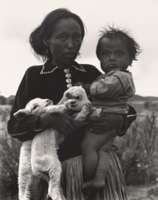This exhibition, Still History? Exploring Mediated Narratives, emerged from the Winter Session 2021 course, “Stories of Power and Diversity: Inside Museums, Archives, and Collecting.”
Museum and archival collections traditionally reflect the experiences of a select class of individuals, eliding or even silencing many others. Fixed in time, photographs, newspaper articles, broadsides, and pamphlets reflect the perspectives and sensibilities of their creators. This exhibition brings together a selection of items from the University of Notre Dame’s campus repositories (Rare Books and Special Collections, the Snite Museum of Art, and the University Archives) that intersect with diversity at points in time, throughout the American 20th century.
Seven Notre Dame students apply a curatorial gaze to seven items or sets of items, asking how they do or do not represent the experiences of Black, Native American, LGBTQ, mentally- and physically-disabled, female, incarcerated, poor, and Hispanic-American individuals and groups. The showcases comprising this exhibition question the mediated nature of images and documents, and place them in an ongoing contemporary discussion of diversity. The curators repeatedly ask whose story is being told in the materials on display and strive to place still images within dynamic historical narratives. They seek commonalities, born of underrepresentation, across time and medium, while also acknowledging that minority experiences vary widely. This exhibition demonstrates curiosity. It invites the viewer to connect with holdings in the University of Notre Dame’s campus repositories and to ongoing campus and nationwide conversations about diversity and representation.
The show’s curators are undergraduates from first-year through seniors, and two graduate students, with fields of study that include anthropology, art history, English literature, classics, American history, and Francophone Studies. They approached this curatorial project not as experts but as explorers, curious about how cultural institutions construct authority through their collecting choices and where silences remain in the historical record. The students include reflective statements at the end of their showcases. Their personal essays underscore their engagement in the work of discovering stories of underrepresented people within our cultural collections.
